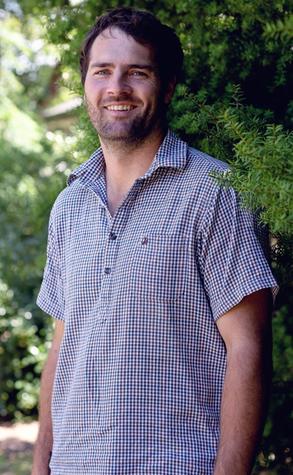Community voice for Greenstreet

A new collective has been formed to protect the Greenstreet area’s waterways.
The Greenstreet catchment group is the 10th catchment team to be set up in Mid Canterbury, kickstarted by a “pretty passionate local community.”
The catchment spans about 4.5 thousand hectares which sit within the north and south branches of the Hakatere (Ashburton) River, starting at the township end, and finishing at Thompsons track.
Rural Consulting’s Harry Millar said the desire for a catchment group in the area came after the Greenstreet Creek saga last year.
Minimum flow restrictions, designed to keep water in the Hakatere (Ashburton) River, were put in place in 2023.
And that change in their minimum flow rate affected the Greenstreet Irrigation Society’s ability to divert water into the Greenstreet Creek race.
“They'd been [diverting it] previously during low flows in the creek to keep the ecosystem alive… they had less flexibility to do that.”
A lack of rainfall in early 2024 meant the creek “virtually, went dry.”
Locals did their best to fill buckets with the dying fish, eels and crayfish, and transport them elsewhere.
“It was pretty devastating for those who were pretty passionate about the creek.”
Environment Canterbury chief executive Stefanie Rixecker used her emergency powers to allow water to be diverted to the creek, three weeks after farmers had contacted ECan about the water levels.
It was a mission to get water into the creek when locals say it shouldn’t have been - that’s why the catchment group was made.
It opened up discussions around how a formalized group structure could drive conversations around water use, and other things like land restoration and pest control, and prevent such an incident from happening again.
The group is relatively new - the idea came about late last year - and there are only 10 members so far, a mix of farms and lifestyle blocks.

“There are things happening at different levels [now],” Millar said.
“The group is still very much advocating for a longer-term solution for being able to augment or supplement Greenstreet creek.
“We’re leading those discussions with Environment Canterbury and other stakeholders; local rūnanga, Fish & Game.”
They’re also in the process of designing a water monitoring plan, discussing flood management with ECan, and looking for ways to record the “intergenerational” knowledge that farmers and residents in the area have for future generations.
“It’s a community voice; it’s a collective,” said catchment chairperson Stacey Stewart.
“The likes of Environment Canterbury don’t want to speak to individuals, you can imagine 1000 individuals coming to you with their problem.
“If you get together and box up all your issues as a collective, you get a lot further.
“And then with pest control, you can do it on your own farm, but if you have a farm below you and two [above] you doing the same job, you’re gonna get further ahead.”
Funding from the Mid Canterbury Catchment Collective has paid for Millar to work as a facilitator for the group, to map out their future and main goals.
Stewart said he’s been a “massive” help in getting the group set up.
“If anyone in the Greenstreet area wants to join, get in contact with Harry or myself.”
By Anisha Satya
